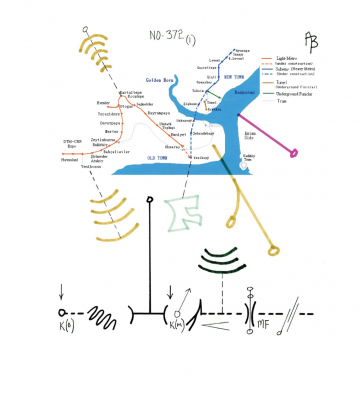A surprising (but, for me, sustaining) fact about Connecticut is that it is a hub for improvising musicians. Some of this, of course, has to do with proximity to New York, but other factors, including Anthony Braxton’s tenure at Wesleyan and the long-running Improvisations series at Hartford’s Real Art Ways, contribute to a remarkable and ongoing creative efflorescence right here in the so-called “land of steady habits.” And, because this month brings two of the most notable figures in creative improvised music, Braxton and Wadada Leo Smith, to our state, I thought I’d take a moment to frame a writing question in their honor. The question is, what can improvisers teach us about composition?

Both of these musicians were key early members of the still-active Chicago collective, the Association for the Advancement of Creative Musicians (AACM), and both took from that experience a life-long commitment to improvised music, composition, and, what might surprise us, teaching. Even at its inception as a modestly funded workspace for South Side black musicians, the AACM took on students and encouraged them to become composers, to make things, not just learn to play. (Muhal Richard Abrams, who played a wonderful concert at Wesleyan just this past February, was a key figure in this pedagogical component.) In his magisterial history of the AACM, A Power Stronger than Itself, George Lewis writes that Abrams “draws upon a tradition that regarded ‘composition,’ or the creation of music, as a cooperative, collective practice, responsive to the conditions and histories from which the individual musicians sprang” (103). Even for these students, composition suggested an interface between one’s own ideas and a larger social context, playing their own and each others’ compositions rather than merely rehearsing music from another time and place.
Although the far edge of improvisation is often associated with a quest for absolute freedom (e.g.,“free jazz” of the mid or late ’60s), and, often, a privileging of individual expression, a fairer take on improvised music since the late ‘60s is that “freedom” can only make sense within contexts, interactions, and communities that support it. The inquiry and exploration of improvisation needs to be situated within and in dialogue with a framework provided by what we might call composition. Composition subsequently becomes valued not as an end product but rather as a research tool and activity for bringing people together into productive interaction. Smith and Braxton have become renowned composers, but, as their scores suggest, this doesn’t mean that their compositions aren’t undergoing constant transformation and renewal by the musicians who make use of them.

We might expect that notions of composition coming from the creative arts would tend toward the more “aesthetic” aspects of the term, that composition, in the arts, means putting together something to be admired or studied. But it is in fact the academic notion of composition, especially as it is sometimes used in writing courses or contests reinforcing evaluative hierarchies, that is often more stubbornly fixed on a passive admiration of aesthetic qualities (“good writing”). For these musicians, however, composition is entirely purposeful. That is, a composition is something to be used, a mechanism for fostering further exploration and research. As Braxton puts it himself in the liner notes of his recent 3 Compositions (Echo Echo Mirror House Music) 2011, “Nothing starts or ends in this model, and as such, more and more the analogy of an ‘erector-set’ might be the best way to talk of structural, conceptual and imaginary experiences in a relational system/entity. This is a ‘tool-box’ of materials that can be utilized for positive experiences, serious research, and hopeful speculation.”